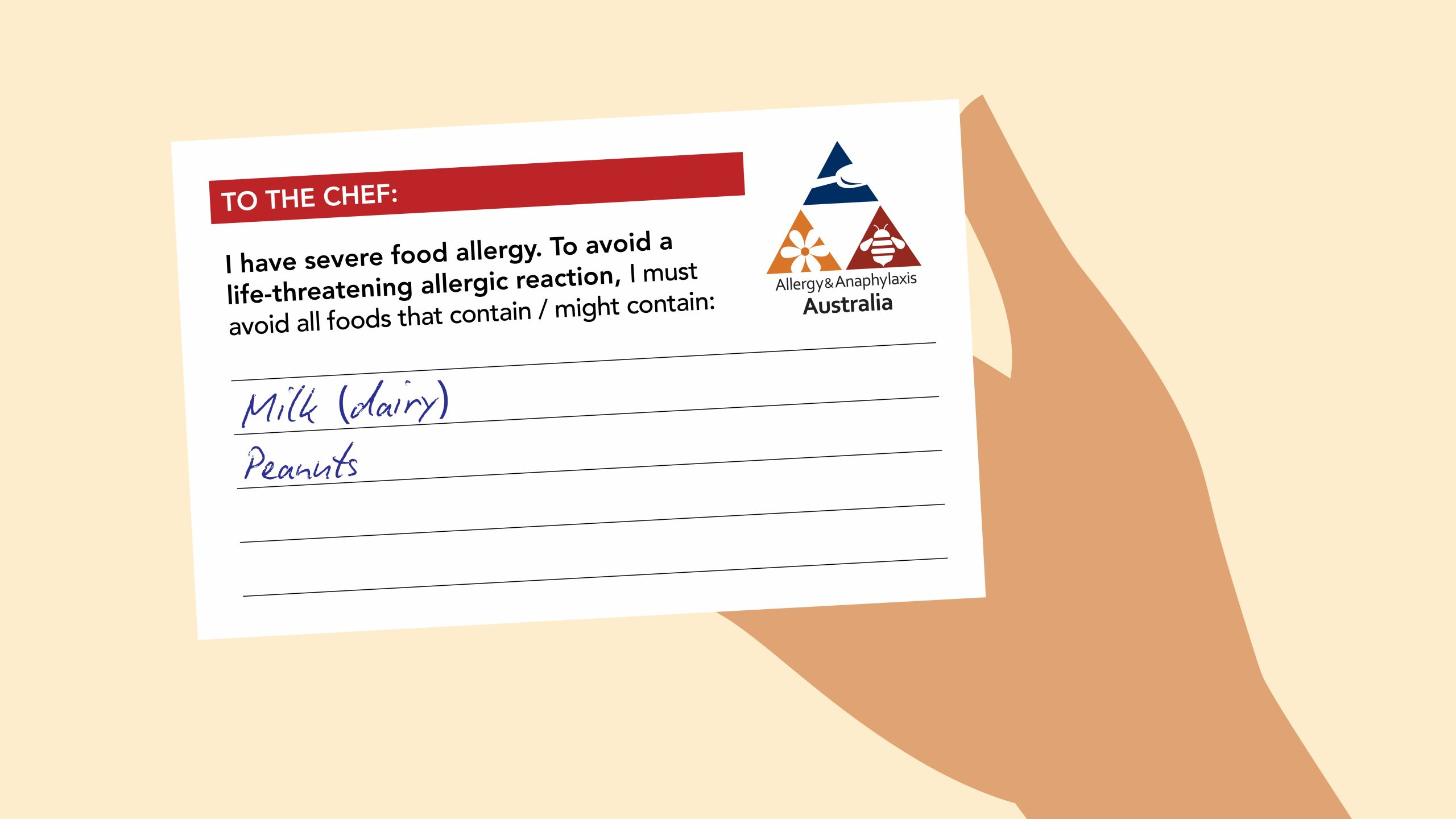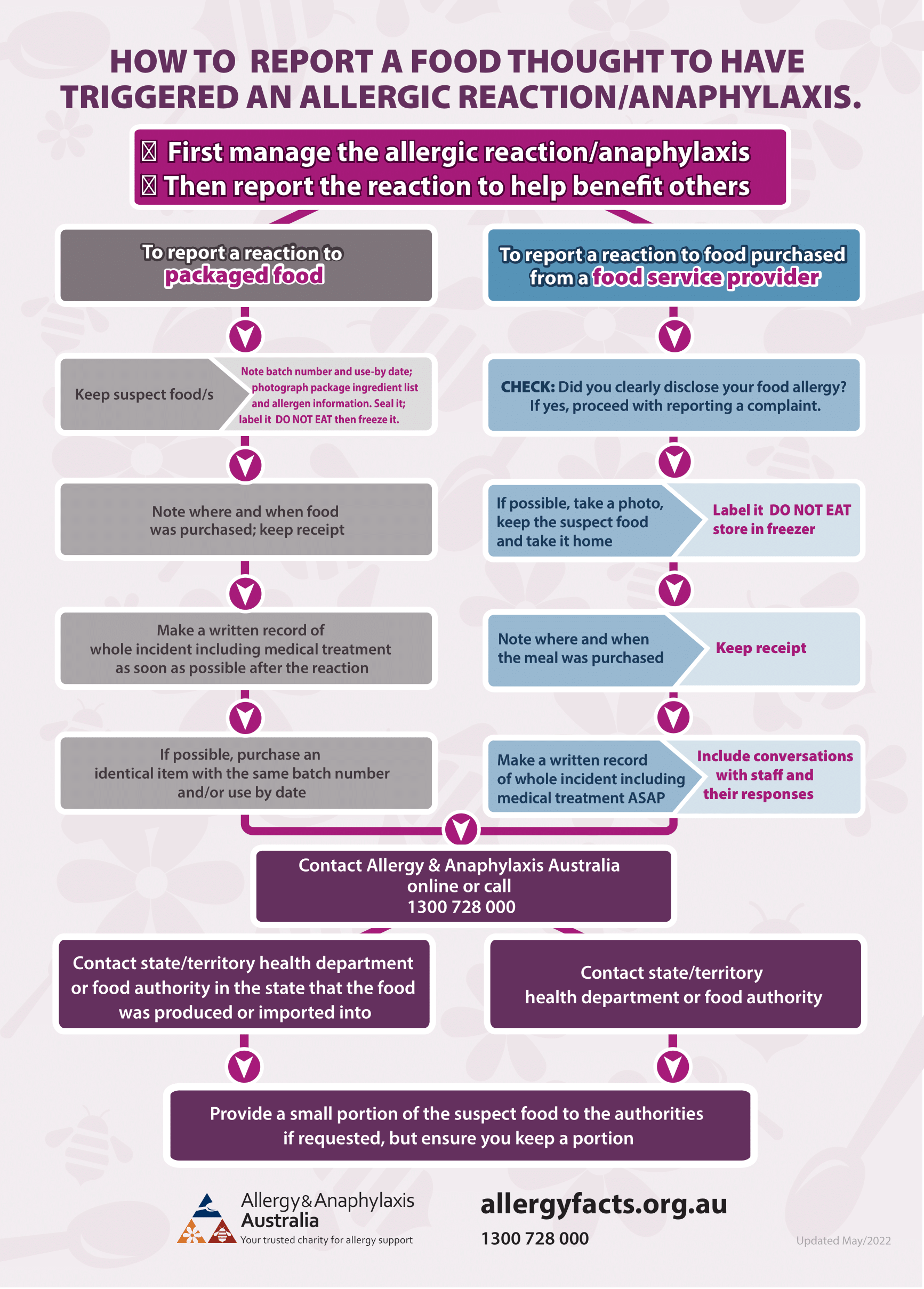Listen Now
Top Tips
- Always take your EpiPen® or Anapen® and ASCIA Action Plan with you when eating out.
- Call ahead to the restaurant or café to see if they can cater for your food allergy.
- Tell restaurant staff about your food allergy clearly EVERY time.
- If you feel restaurant staff are not taking your food allergy seriously – eat somewhere else.
- Eat simple. Order plain foods with few ingredients that are less likely to have hidden food allergens.
Your food allergy should not stop you from enjoying yourself
with friends and family. It takes some planning and
communication but it’s worth the effort.
Eating out with a food Allergy
Plan ahead
Check out online menus (remember they do not have to list food allergens and even if they do, the chef could be using a different recipe on the day you order) and call the restaurant or café to ask about their dishes and their food allergen content.
This will give you a feel for how they will deal with your food allergy needs and give them time to prepare and possibly even create or alter a meal specifically for you.
Where possible, eat at less busy times.
Say it clearly
If you’ve eaten at a restaurant before, remember that chefs, staff and recipes constantly change. Tell staff about your food allergy every time.
Be clear. Don’t say “Does this have peanut in it?” Instead say, “I have a severe peanut allergy, does this have any peanut or peanut products in it?”
Safer options
With their standardised food preparation processes and consistent menus across locations, chain restaurants and takeaways may be safer choices.
Eat simple
The simpler the dish, the less chance of cross contamination and hidden food allergens. For example, ordering steak, steamed potato and vegetables with no dressing, sauce or gravy is a safer bet.
Eating out with a food Allergy
The touch test
Despite reassurances, if you suspect a dish has your food allergen in it, use the touch test as an added safety check.
Put a small amount of the food on your outer lip. If you get a tingling, swelling, burning or chilli-like feeling – it is safer not to eat that food.
The touch test does not guarantee that food is safe, however, it is an extra check you can use.
Do NOT ask others to taste your food to see if the food contains egg or peanut for example. Allergen content cannot be excluded by tasting. This is not a recommended safety strategy.
High risk food types
Some foods types and dining situations are higher risk than others. Below are some examples higher risk food types for different food allergies.
Peanut and tree nut allergy
Asian food: Indian, Thai, Chinese and Vegan.
Sesame allergy
Middle eastern.
Seafood allergy
Seafood restaurants, fish and chip shops.
Milk (dairy) allergy
Cafes that use the same frother for milk (dairy) and dairy-free milk.
All food allergies
Buffet and all-you-can-eat restaurants have a high risk of cross contamination.
Other things to think about
Before you eat out, eat a snack at home in case you are the last person at your table served.
Take safe snacks with you, just in case you find your options are limited or you are starving and are tempted to take a risk with a food you are not sure about.
Take personalised Allergy & Anaphylaxis Australia Chef Cards that you can pass onto the wait staff after explaining your food allergy and the need to be cautious. People have commented their allergies are taken seriously when they hand over the A&AA Chef Card.


Remember
Always carry your adrenaline injector when eating out.

Reporting a reaction
If you have an allergic reaction after telling restaurant staff about your food allergy, it’s important to report your reaction so the restaurant processes can be investigated. This could help prevent another person from having anaphylaxis in the future.
Once you have managed your allergic reaction and recovered, report the reaction to the health department.
Information about who to contact and what to do is available from the following link: How to report a food thought to have triggered an allergic reaction/anaphylaxis
